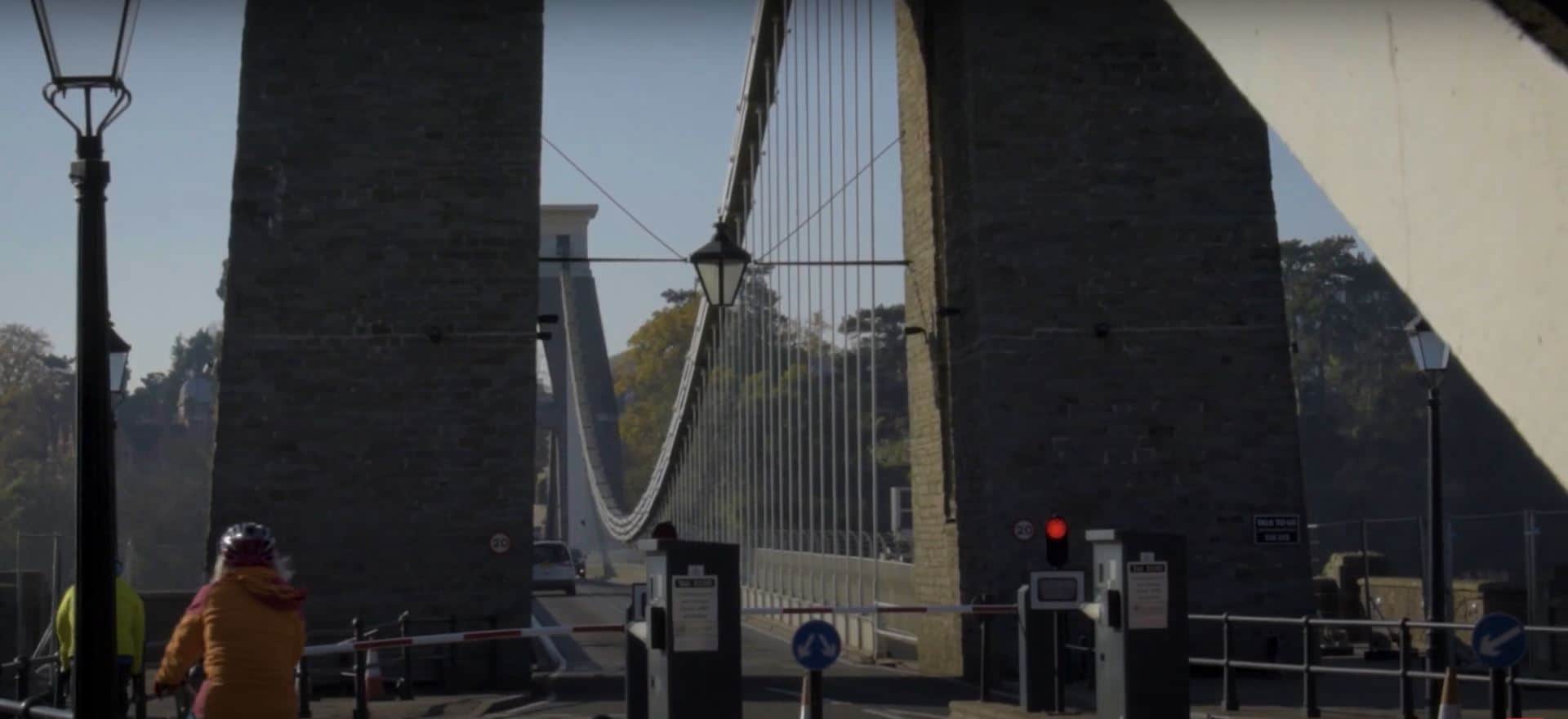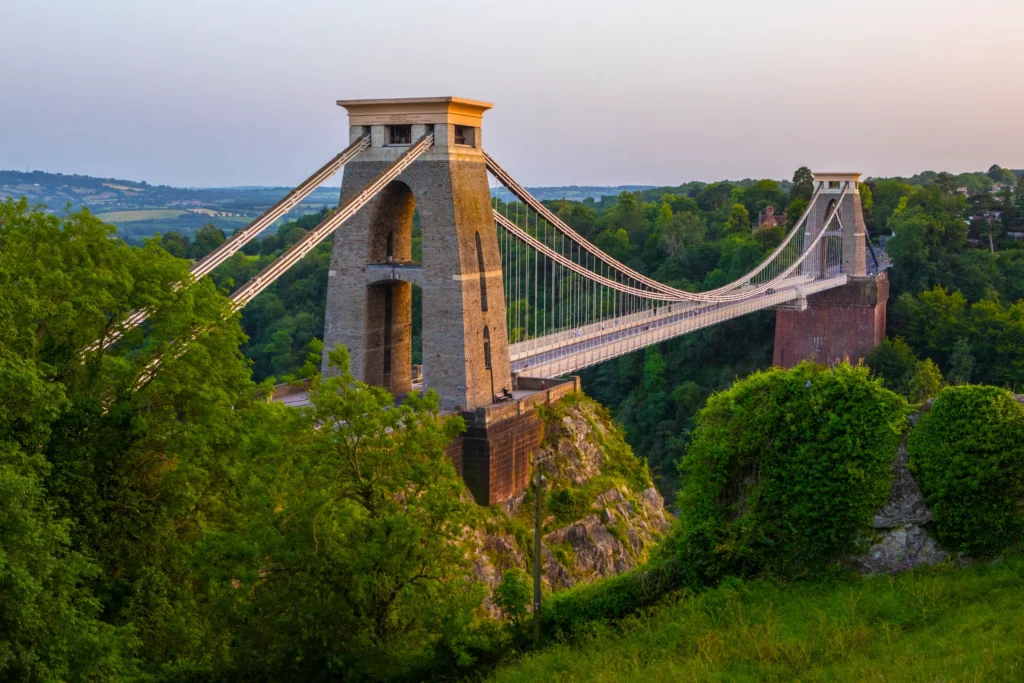Clifton Suspension Bridge and Observatory – Bristol

Updated On: February 22, 2024 by Ahmed Samir
The Clifton Suspension Bridge and Observatory, situated in the enchanting city of Bristol, are two of the United Kingdom’s most cherished landmarks. These iconic structures have long been revered for their breathtaking beauty, remarkable engineering, and historical significance. With a history spanning nearly two centuries, the Clifton Suspension Bridge and Observatory continue to captivate the hearts and minds of both locals and tourists, offering not only awe-inspiring views of the Avon Gorge but also a window into the past when visionary engineers dared to defy the odds and connect two sides of challenging terrain.
This comprehensive article will delve into the rich history, architectural brilliance, cultural importance, and enduring appeal of the Clifton Suspension Bridge and Observatory, demonstrating why they stand as timeless testaments to human achievement.
Exploring the Origins of the Clifton Suspension Bridge
The origins of the Clifton Suspension Bridge can be traced back to the early 19th century when the need for a reliable connection between the booming city of Bristol and the rural parish of Leigh Woods became apparent. Crossing the treacherous waters of the Avon Gorge was no small feat, and before the bridge’s construction, the only way to traverse the gorge was by ferry, which was slow and subject to weather-related interruptions.
The idea for the bridge was conceived by a Bristol wine merchant named William Vick, who had left a significant sum of money in his will to construct a bridge over the Avon Gorge. However, it was the legendary Isambard Kingdom Brunel who would go on to turn this ambitious dream into a reality. Brunel, one of the most celebrated engineers of his time, took charge of the project in 1831.
Construction Challenges
Building a suspension bridge of this scale in the 19th century was a remarkable engineering challenge. The first major hurdle was the span itself, with the gorge stretching over 700 feet wide. Brunel’s design featured two massive limestone towers on either side of the valley to anchor the bridge’s suspension chains. These towers, constructed of local stone, serve a functional purpose and add a touch of architectural grandeur to the bridge.
The construction process itself was gruelling and hazardous. The gorge’s unpredictable weather conditions, strong winds, and treacherous terrain made the work exceedingly tricky. The workers, many of whom were local stonemasons and labourers, faced daily dangers and harsh conditions. Sadly, during construction, several lives were lost.
Financial setbacks also plagued the project, and fundraising efforts fell short, causing work to reach a standstill in 1843. Despite these setbacks, the project was eventually completed with the support of local investors, and the Clifton Suspension Bridge officially opened on 8 December 1864, nearly five years after Brunel’s death.
Design and Architecture

The Clifton Suspension Bridge‘s design is a testament to Isambard Kingdom Brunel’s genius. The bridge features a combination of Gothic and Egyptian influences, showcasing the architectural trends of the Victorian era. The bridge’s Gothic Revival style can be seen in its pointed arches and decorative features. At the same time, the Egyptian-inspired obelisks on top of the towers add a unique and memorable touch to the structure.
The suspension system itself is a marvel of engineering. Iron chains, anchored to the towers, support the roadway, allowing it to span the gorge. The chains are held in place by massive stone saddles, and their distinctive appearance has become an iconic symbol of the bridge. The deck, made of wrought iron, is expansive enough to accommodate both pedestrian and vehicular traffic.
The Clifton Suspension Bridge Observatory
Perched high above the Avon Gorge, on the Clifton side of the bridge, stands the Clifton Suspension Bridge Observatory. This small but intriguing structure adds an extra layer of charm and historical significance to the bridge.
Initially designed by Isambard Kingdom Brunel as a visitor centre and toll booth for the bridge, the observatory has undergone several transformations over the years. Today, it serves as a museum and interpretation centre, giving visitors a deeper understanding of the bridge’s history and engineering.
The observatory also houses a collection of artefacts and documents related to the bridge’s construction and history. Visitors can explore interactive displays, photographs, and historical documents that offer insight into the challenges and triumphs of the bridge’s construction.
The Views from the Observatory
One of the Clifton Suspension Bridge Observatory’s main attractions is its panoramic views of the Avon Gorge and the surrounding countryside. From the observation deck, visitors can gaze out over the picturesque landscape, taking in the stunning scenery below. The vista includes:
- The Avon River winds through the gorge.
- The lush greenery of Leigh Woods.
- The historic city of Bristol is in the distance.
The views from the observatory are exceptionally breathtaking during sunset when the warm hues of the setting sun cast a golden glow over the landscape, creating a magical and unforgettable sight. Additionally, the observatory provides an ideal vantage point for capturing stunning photographs of the bridge and its surroundings.
Cultural Significance
The Clifton Suspension Bridge and Observatory hold a special place in the hearts of Bristolians and the wider UK community. Beyond their architectural and engineering significance, these structures are deeply intertwined with the region’s cultural fabric.
Local Pride: The bridge has become a symbol of Bristol and a source of immense pride for its residents. It has also featured in countless artworks, literature, and cultural references, cementing its status as an iconic landmark.
Historical Milestone: The bridge’s completion marked a significant milestone in the development of Bristol and the surrounding region. It facilitated more accessible transportation of goods and people, contributing to the city’s economic growth.
Tourist Attraction: Today, the Clifton Suspension Bridge and Observatory draw tourists from all over the world. Visitors admire the bridge’s architectural beauty, learn about its history, and enjoy breathtaking views.
Educational Value: The observatory serves as an educational resource, offering insights into the world of engineering and showcasing the determination and innovation of Isambard Kingdom Brunel and his contemporaries.
Events and Celebrations: The bridge is often a focal point for local celebrations and events, including the annual Clifton Suspension Bridge Day, which commemorates the bridge’s opening and features various activities and entertainment.
Preservation and Restoration
Over the years, the Clifton Suspension Bridge and Observatory have undergone various preservation and restoration efforts to ensure their continued longevity. These efforts testify to the commitment to preserving this iconic piece of history.
The Clifton Suspension Bridge Trust, established in 1953, plays a crucial role in overseeing the maintenance and conservation of the bridge and observatory. The trust raises funds and works tirelessly to ensure that these structures remain safe and accessible to the public.
Restoration projects have included:
- Repairs to the bridge’s ironwork.
- Refurbishing the observatory’s interior.
- Ongoing efforts to protect the bridge from corrosion and environmental damage.
These initiatives help preserve the bridge’s original charm and structural integrity.
Visiting the Clifton Suspension Bridge and Observatory
The Clifton Suspension Bridge and Observatory should undoubtedly be on the itinerary for those planning a visit to Bristol. Here is some practical information for visitors:
- Location: The Clifton Suspension Bridge is located in the Clifton area of Bristol, easily accessible by car, public transport, or on foot.
- Admission: While there is no fee to cross the bridge, a small admission fee is charged to access the observatory. The prices help support the ongoing maintenance and preservation efforts.
- Guided Tours: Guided tours are available to explore the bridge’s history and architecture more in-depth. These tours provide fascinating insights into the bridge’s construction and significance.
- Accessibility: The bridge and observatory are accessible to disabled visitors, with wheelchair ramps and accessible facilities.
- Parking: Limited parking is available near the bridge, but finding a spot during peak times can be challenging. Consider using public transport or nearby parking facilities.
Conclusion
The Clifton Suspension Bridge and Observatory are more than just remarkable feats of engineering; they are enduring symbols of human ingenuity, determination, and the indomitable spirit of progress. These iconic structures have stood the test of time, captivating generations of visitors with their beauty and historical significance.
As visitors stand on the deck of the bridge or gaze out from the observatory, they are not only treated to breathtaking views of the Avon Gorge but also transported back in time to an era when visionaries like Isambard Kingdom Brunel dared to dream big and accomplish the seemingly impossible. Whether you are a history enthusiast, an architecture buff, or simply someone seeking natural beauty, the Clifton Suspension Bridge and Observatory in Bristol are sure to leave an indelible impression, reminding us of the power of human ambition and the enduring legacy of great engineering marvels.
FAQs
What is the purpose of the Clifton Suspension Bridge Observatory?
The Clifton Suspension Bridge Observatory, designed initially as a visitor centre and toll booth, now serves as a museum and interpretation centre. It provides visitors with insights into the bridge’s history and engineering.
Are guided tours available for visitors?
Yes, guided tours are offered for those interested in a more in-depth exploration of the bridge’s history and architecture. These tours provide valuable insights into the bridge’s construction and significance.






